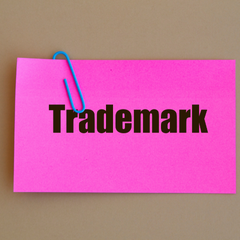

Legal Insight
April 2022
Ioannis Psarakis, Lecturer, LL.M (III), PhD Cand.
(Republished from TheTotalBusiness)
Summary: Trademark registration applications have been increasing in recent years at an almost geometric rate. This is the best confirmation of economic studies worldwide linking the acquisition of a trademark right to progress and growth - and to small and medium-sized enterprises (SMEs). In other words, the real market recognises this reality. The trademark can now take various 'forms'. Images, words, video, audio, even smells. In the following story we will follow the attempt by Netflix Inc (the Netflix we know) to register as a European Union trademark the sound we hear when we start its programmes. In the end, it did not succeed. The reason is (or was?) very specific.
An interesting case - the Netflix audio
Close your eyes and listen to the audio of this video. Do you understand what it's all about?
Five years ago, in May 2017, Netflix attempted to register as a European Union sound mark the audio cue that precedes the viewing of programmes on the platform.
The European Union Intellectual Property Office (EUIPO) refused this registration. The reason? It was considered that the sound in question was too short and simple a sound so that it could not act in the minds of consumers as an indication of the origin of its services (i.e. the consumer would understand, on hearing this sound, that it implied that it was following a service provided by a particular origin). According to the EUIPO, this sound could be understood simply as an indication, as a precursor to the start or end of a programme ("gong like" sound).
At this point we should say the following: the basic function of the trademark is what in law we call the "origin function". The purpose of the trademark is to communicate to the consumer that the trader is attempting to declare a specific origin of the goods he is selling. If this is not possible (as was considered in this case - that is to say, it was considered that in the minds of consumers the sound would merely refer to the start or end of a programme, but not to the origin of the programme from a particular undertaking), then the registration of the trade mark should not be accepted, since it does not already fulfil its essential purpose.
In this particular case, it was therefore considered that this function was not achieved with this sound. On the contrary, the EUIPO has held that the lion's roar is registrable for MGM (Metro-Goldwyn-Mayer) programmes - indeed it appears that a separate company was created as the holder of this right under the name Metro-Goldwyn-Mayer Lion Corporation).
This judgement about the Netflix audio may be strange to many: today, when we hear this audio, we all probably realize that it follows a Netflix program. But what is critical is what was going on at the time of the consideration of the application. Indeed, in May 2017 there was no such proliferation of this particular soundtrack and the EUIPO's judgment that at best it would probably refer to the start or end of a particular programme seems to be moving in the right direction.
For this reason, Netflix on 21.10.2019 chose to file an application for an EU trade mark registration with this particular soundtrack, but accompanied by a video﮲ you can see (and hear) the trade mark here. This is a multimedia trade mark - and that is what is intended. With the video, which shows the Netflix emblem, the well-known company seems to have overcome any concerns about the source function. The consumer of services, listening to the audio and watching the video, will understand that this is a signal which is intended to indicate the origin of the service consumed.
Of course, today it may be possible for Netflix to proceed with a new filing (alone) of its sound indication, since, now, the requirement of the function of origin is probably satisfied: through the widespread use of that sound indication, the public has associated it with Netflix Inc. and its services. This is the so-called 'acquired distinctiveness'. And it is called acquired because the conditions for performing an origin function arise following the creation of the particular (in this case, sound) sign, through its establishment in trade.
However, to date Netflix Inc. has not proceeded to file a trademark application for the sound in question, nor on the basis of acquired distinctiveness.